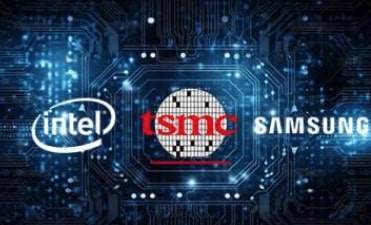Now Reading: Samsung, TSMC, and Intel: The Battle for Semiconductor Dominance
-
01
Samsung, TSMC, and Intel: The Battle for Semiconductor Dominance
Samsung, TSMC, and Intel: The Battle for Semiconductor Dominance

Quick Summary
- TSMC 3nm Process Node: TSMC leads semiconductor chip fabrication with high transistor density, better yields, and adoption by major clients like Apple and NVIDIA.
- TSMC’s Progress in 2nm Technology: The upcoming N2 process introduces nanosheet transistors (GAA architecture). Mass production begins in late 2025; capacity will scale from 40,000 wafers per month (2025) to 200,000 wafers per month (2027). End-user products expected by 2026-27.
- Competition from Samsung and Intel: Samsung commenced growth on GAA transistors at the 3nm node in 2022 but faces yield issues (~40%, improving to ~50%).Mass production for its SF2 (2nm-class) starts late with lower yields compared to TSMC. Intel focuses on aggressive ramp-up for its A18 node by mid-decade but struggles due to delays.
- Global Market trends: Advanced nodes like sub-5nm projected to make up a significant share of the global semiconductor market ($950B by 2030). At the end of Q4’24, TSMC holds a dominant foundry market share (64%), followed by Samsung (12%) and Intel (5%).
Indian Opinion Analysis
The advancements in semiconductor technology mark a critical juncture for India’s aspirations toward self-reliance in technology manufacturing via initiatives such as Semicon India Program. Dominance by global leaders like TSMC reflects immense investment into R&D and infrastructure-areas where Indian systems are gradually progressing but still lag behind substantially. The burgeoning demand for cutting-edge chips highlights reliance on external supply chains, which could amplify vulnerabilities if geopolitical tensions disrupt trade routes or partnerships.
India’s focus toward attracting foreign investments must strike a balance between technological adoption and fostering indigenous capabilities through knowledge transfers within collaborative frameworks. Observing industry challenges such as yield improvements seen within competitors’ campaigns could offer learning pathways for emerging Indian firms venturing into fab technologies.
Read more: Next Big Future























